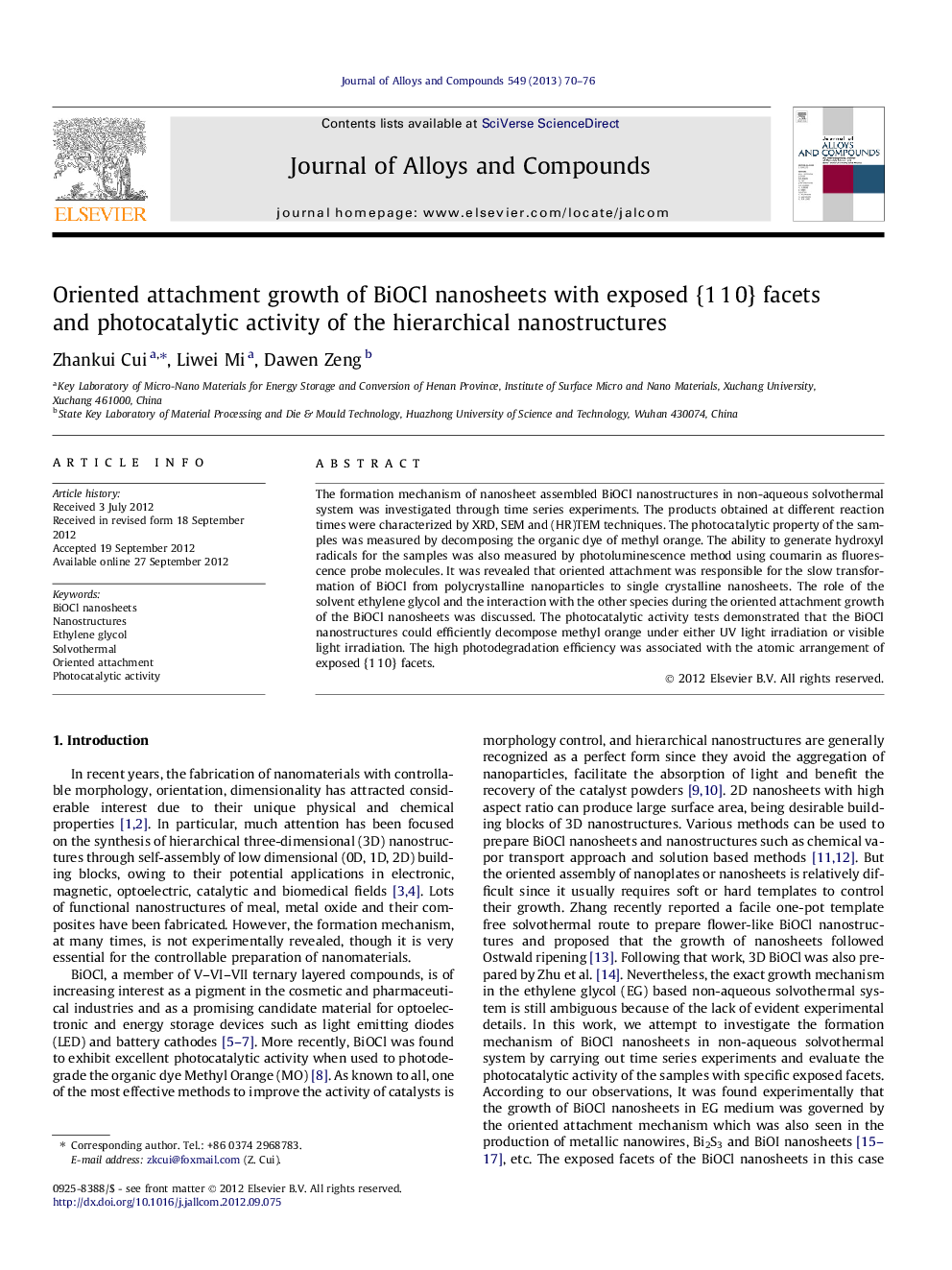| Article ID | Journal | Published Year | Pages | File Type |
|---|---|---|---|---|
| 1615145 | Journal of Alloys and Compounds | 2013 | 7 Pages |
The formation mechanism of nanosheet assembled BiOCl nanostructures in non-aqueous solvothermal system was investigated through time series experiments. The products obtained at different reaction times were characterized by XRD, SEM and (HR)TEM techniques. The photocatalytic property of the samples was measured by decomposing the organic dye of methyl orange. The ability to generate hydroxyl radicals for the samples was also measured by photoluminescence method using coumarin as fluorescence probe molecules. It was revealed that oriented attachment was responsible for the slow transformation of BiOCl from polycrystalline nanoparticles to single crystalline nanosheets. The role of the solvent ethylene glycol and the interaction with the other species during the oriented attachment growth of the BiOCl nanosheets was discussed. The photocatalytic activity tests demonstrated that the BiOCl nanostructures could efficiently decompose methyl orange under either UV light irradiation or visible light irradiation. The high photodegradation efficiency was associated with the atomic arrangement of exposed {1 1 0} facets.
Graphical abstractFigure optionsDownload full-size imageDownload as PowerPoint slideHighlights► Growth of BiOCl nanosheets in EG medium was experimentally revealed. ► Oriented attachment mechanism governed formation of single crystalline BiOCl. ► The exposed facets of BiOCl nanosheets were {1 1 0} planes. ► The samples could efficiently degrade MO irradiated either by UV or by Vis. ► The high efficiency was associated with the exposed {1 1 0} facets of BiOCl.
